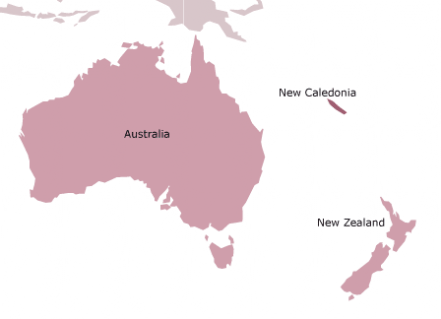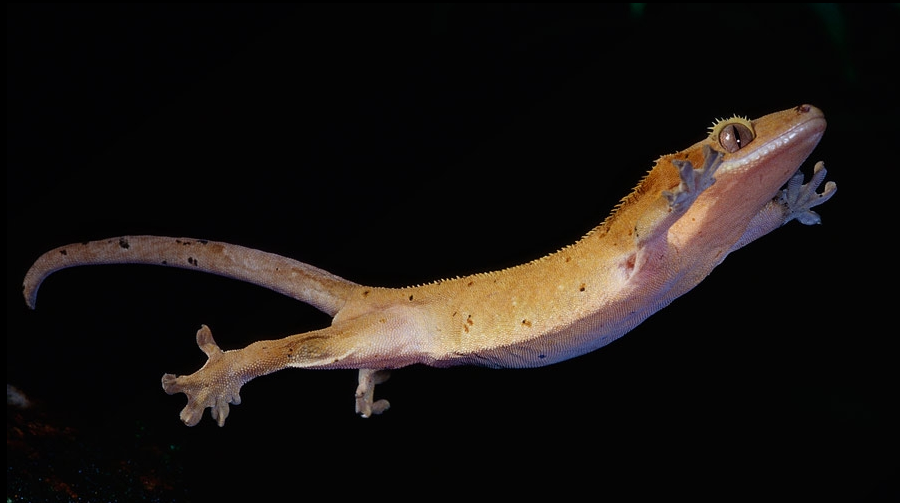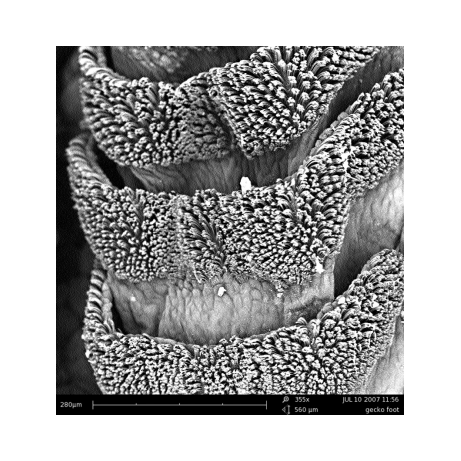What is a Crested Gecko?.
About Crested Geckos:These Geckos could aptly be named the comeback Kings! - They were thought to have been extinct - until 1994 when they were re-discovered during an expedition to New Caledonia. Most of the population in the pet trade today are the result of specimens brought back from that time.
They do go by some other names : New Caledonian Crested Gecko , Guichenot's Giant Gecko and Eyelash gecko. The name is derived from the eyelash like spiky protrusions above the eyes and going back down to the neck and often down the whole side of the body too..
The species was first classified by a French zoologist in 1866 called Alphonse Guichenot. there are 3 distinct populations of this species in New Caledonia - one the Isle of Pines and two on the main island Grande Terre.

Primarily arboreal and nocturnal - they live in the canopy mostly and are accomplished jumpers! They are omnivore's - but essentially classified as frugivorous preferring to eat on decomposing fallen fruit in the canopy or on the ground and partial to the odd insect that they chance upon.

It is not yet known how long they can live for as we only have the specimens in captivity to grade for this - but they have so far lived for almost 20 years and more! And unlike some other gecko species they apparently continue to make eggs well into this age bracket..
Very little is known about their reproduction in the wild - but in captivity they are prolific breeders! Females tend to lay two eggs at roughly 4 week intervals which take approximately 60-150 days to incubate and hatch depending on conditions and temperature.
Females especially can suffer from Calcium deficiency due to this frequent egg production. These geckos can store calcium in two sacks in the inside of their mouths - With depletion of calcium the animal can suffer a calcium crash that can sometimes lead to death in the worst case scenario. Generally a female with a kinked tail is a fairly good indication that at some point there has been a calcium deficit issue.
A female only has to mate with a male once in order to produce fertile eggs for up to 8-10 months.. in captivity females need to have an artificially induced "cooling" period where its 's best to keep them apart from males in order to let them recover and recuperate from egg laying during the rest of the year..
Of the things we do know about them - it is still not determined whether temperature of incubation has any effect on the sex of the hatchlings. And we do know that hatchlings will not eat anything until they have had their first shed - feeding can sometimes take up to 2-3 weeks to start - they appear to subsist on what's left of the yolk sack they absorbed before hatching.
The cool things about this species is their toes and even a small pad on the tip of their tail.. These pads are covered in small hairs called setae. On the tip of each setae is then another few hundred or so smaller hairs called spatuale.
The top theory on how the gecko's foot works assumes that these hairs are so fine that they make use of an attractive force called the Van der Waals force - which in simplistic terms is the attraction to each other of atoms on the quantum scale. The bond to a surface that is clean and smooth is so great that the gecko cannot even lift off it's foot when it's achieved and have developed a specific way of peeling up the toe from the front so as to enable them to break the bond. If you observe your gecko walking you will see this occur. The efficiency of this system is so great that just one toe can support an average adult! They do also have small claws to aid them as well as naturally not everything in the wild is smooth!
The tail is prehensile and geckos with it use it quite a lot in their everyday activities - however they are not hindered if for some reason that they lose it - there are anecdotes that all of the wild specimens that were caught did not have tails in the wild - and it was a surprise to the keepers when they eggs they propagated produced animals that hatched with tails!


